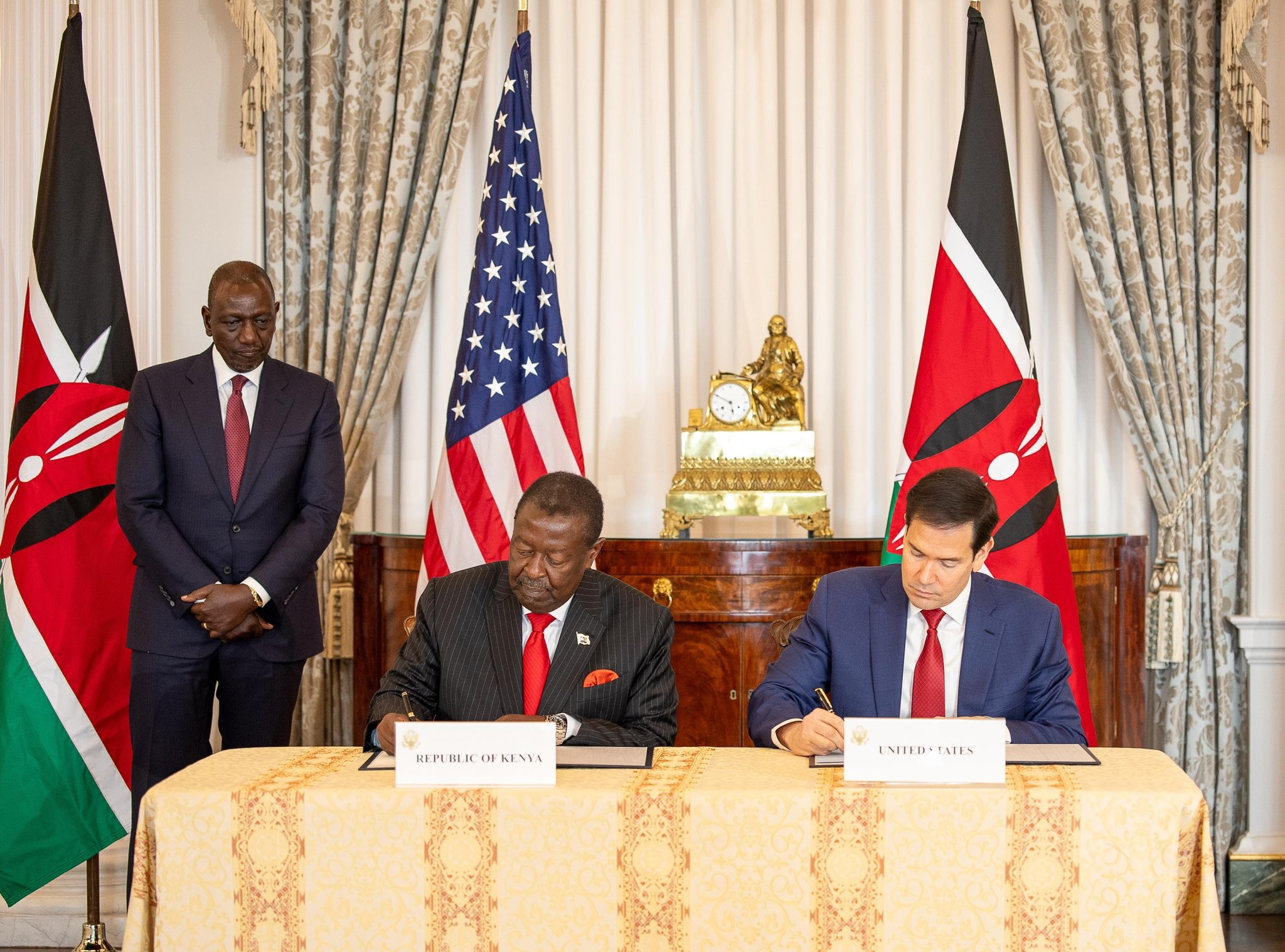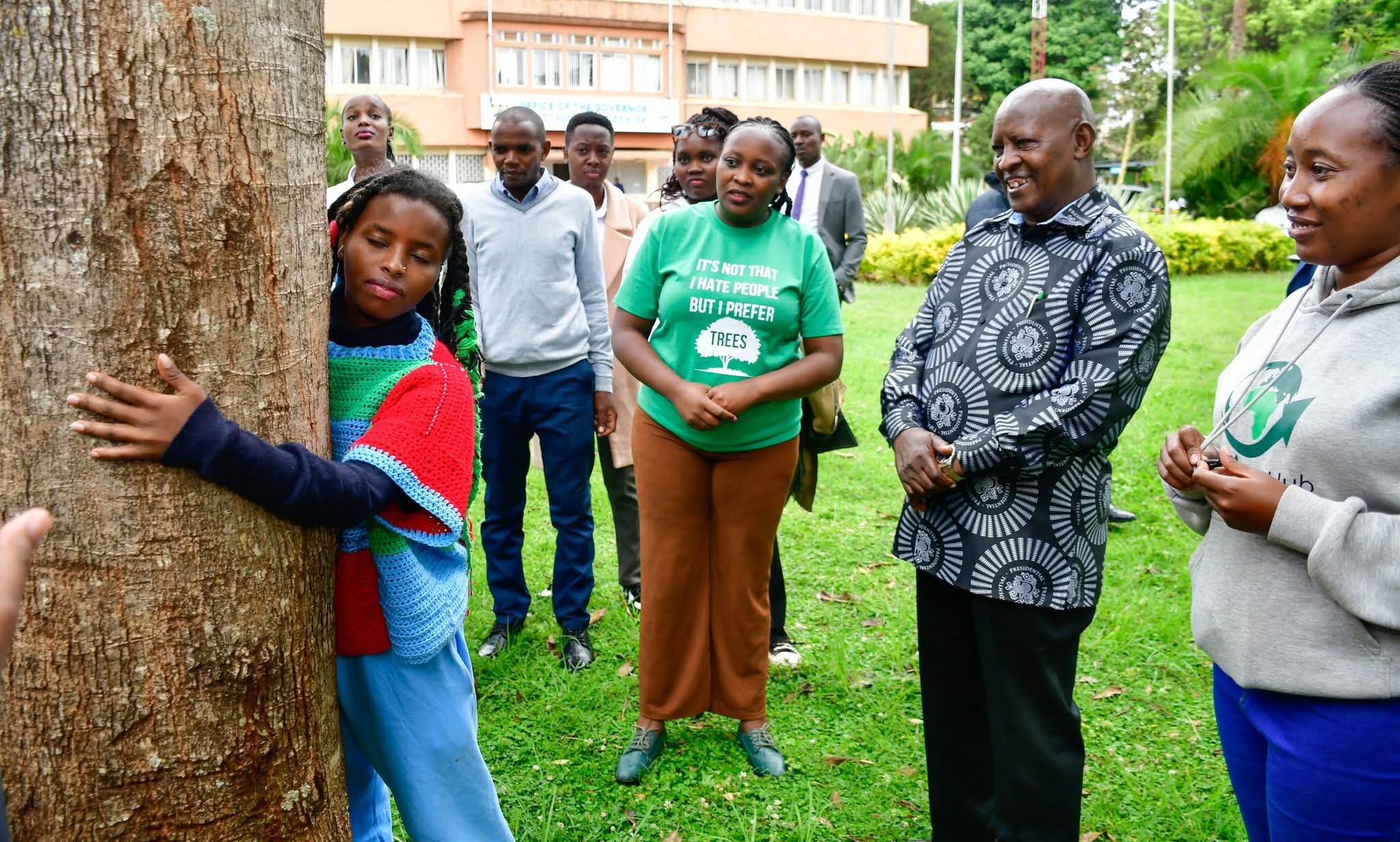The human body is similarly vulnerable on multiple fronts to plastic pollution in water sources, which could cause hormonal changes, developmental disorders, reproductive abnormalities and cancer
The success rate of the ban imposed on single-use plastics has hit 95 per cent.
The National Environment Authority attributes the strides made to efforts by multiple agencies tracking down those sneaking plastics into Kenya.
“We have managed plastic carrier bags quite well with the support of other government agencies," director general Mamo Mamo said on Wednesday.
"The agencies include the National Police Service, Directorate of Criminal Investigations, Customs police, Kenya Revenue Authority and Anti-Counterfeit Authority.”
He praised the agencies, saying they have done a commendable job.
“Things of late are much better than what we used to see. However, we will continue to have surveillance to ensure that we get rid of plastics,” Mamo said.
On February 27, 2017, the Environment ministry banned the use of plastic carrier bags through a gazette notice.
The ban came into effect in August that year.
Possession of plastics attracts a fine of between Sh2 million and Sh4 million, or a jail term of between one and two years, or both.
Before 2017, about 100 million plastic bags were used in Kenyan supermarkets every year, with severe consequences to the environment.
For instance, a study supported by Nema in 2017 showed more than 50 per cent of livestock had ingested plastics.
The study conducted in Dagoretti, Kiserian and Kenya Meat Commission showed that affected livestock were weak, with lower milk and beef production.
The government says the ban will help protect the environment and improve living standards.
Mamo said Interpol has been working closely with the authority.
He said Interpol has a 30-day engagement at the Coast with Nema and other agencies.
This, he said, is meant to address aquatic pollution, especially at the Port of Mombasa.
“We are working to ensure that oil waste is handled properly and the destruction of counterfeit goods is done in a harmonised way,” Mamo said.
Despite the ban, however, plastic bags are still being smuggled into the country.
It is suspected that the plastics come from Tanzania, Somalia and Uganda.
The authority has been facing challenges in Garissa, Mandera, Moyale, Busia, Taita Taveta, Namanga and other border posts.
On June 5, 2019, Kenya banned single-use plastics on beaches, national parks, forests and conservation areas.
The ban prohibits visitors from carrying single-use plastic water bottles, disposable cups, plates, cutlery and straws into national parks, forests, beaches and conservation areas.
Earlier, Mamo had told the Star that other forms of plastics were becoming one of the biggest catastrophes of our generation and a major threat to biodiversity.
“We are also worried about these other single-use plastics. We are worried about plastic cups, plastic plates, plastic forks and plastic straws,” he said.
“We are studying whether we can expand and put [these] under the ban.”
In October, the United Nations Environment Programme warned that the amount of plastics in the oceans has grown sharply in recent years and is projected to more than double by 2030.
The report, From pollution to solution, followed a global assessment of marine litter and plastic pollution.
It found that there is growing threat in all ecosystems from source to sea.
“Despite current initiatives and efforts, the amount of plastics in the oceans has been estimated to be around 75-199 million tonnes,” it says.
The report warned that plastic pollution leakage into aquatic ecosystems is set to have dire consequences for human health, the global economy, biodiversity and the climate.
“The human body is similarly vulnerable on multiple fronts to plastic pollution in water sources, which could cause hormonal changes, developmental disorders, reproductive abnormalities and cancer,” the report warns.
Plastics are ingested through seafood, drinks, and even common salt; they penetrate the skin and are inhaled when suspended in the air.
The report warns that plastic emissions into aquatic ecosystems are projected to nearly triple by 2040 without meaningful action.
Unep has however praised efforts aimed at ending marine plastic pollution.
It said more and more countries are joining the Clean Seas campaign to fight marine litter and plastic pollution.
“Over 60 countries – both coastal and landlocked – have signed up to this global movement with ambitious pledges and commitments,” it said.
Unep said at least 11 million tonnes of plastic are dumped into water bodies every year.
This is the equivalent of one garbage truck being dumped every minute.
It is estimated that about five trillion macro and microplastic pieces are in the ocean, making up 60 to 90 per cent of marine debris.
Scientists have warned that there will be more plastic than fish in the world’s oceans by 2050 unless people stop using single-use plastic items.
Through the Clean Seas platform, Unep is connecting and rallying individuals, civil society groups, industries and governments to reduce marine litter.
Since its launch in 2017, the campaign has become a catalyst for change, transforming habits, practices, standards and policies around the globe.
Unep said many countries have pledged to reduce or eradicate single-use plastics from their societies through stronger legislation and regulation.
Others have committed to investing more in national recycling facilities and promoting action plans to prevent harm to the coastal and marine environment.
Kenya joined the campaign in December 2017.
Edited by Josephine M. Mayuya













